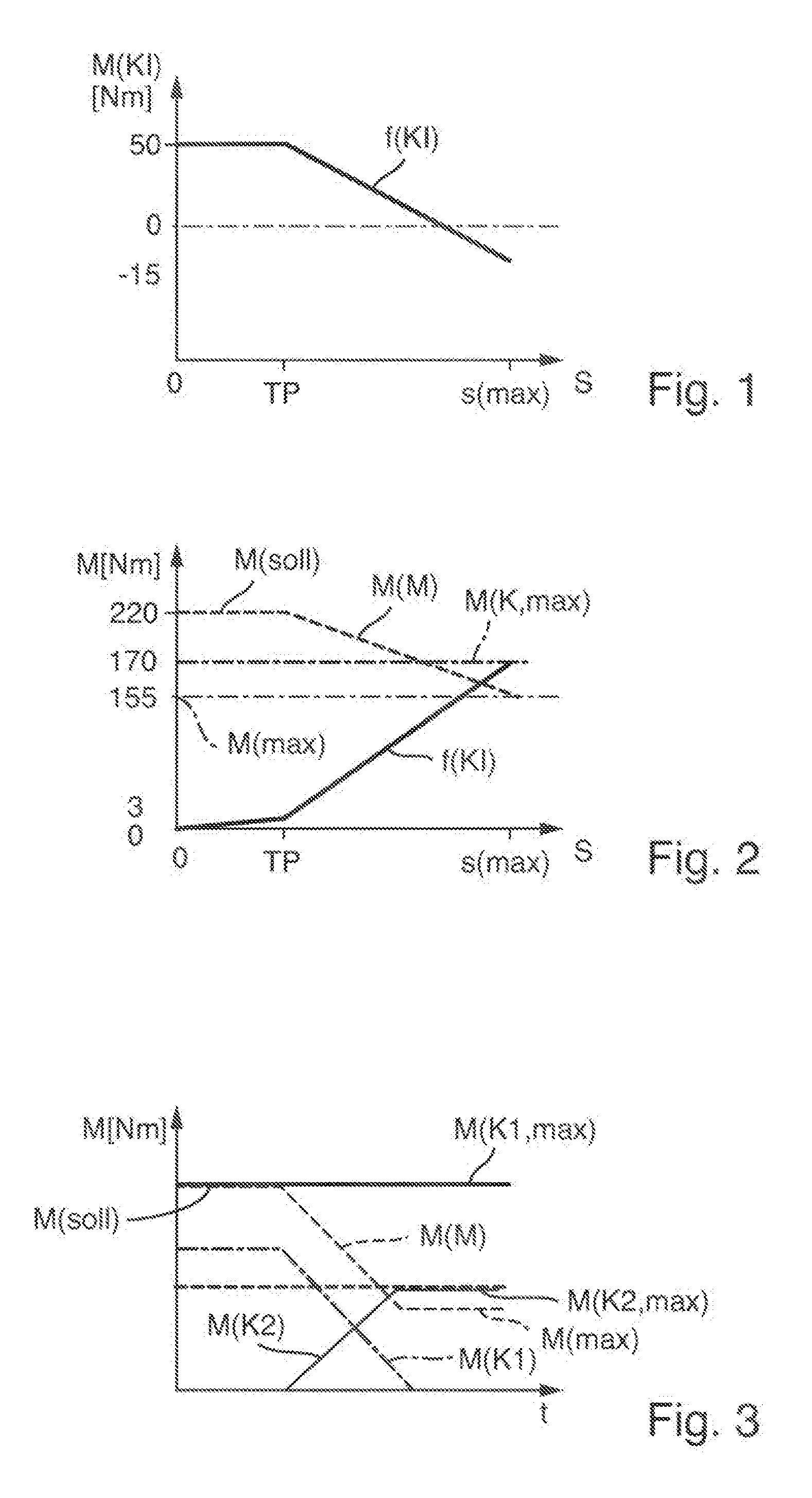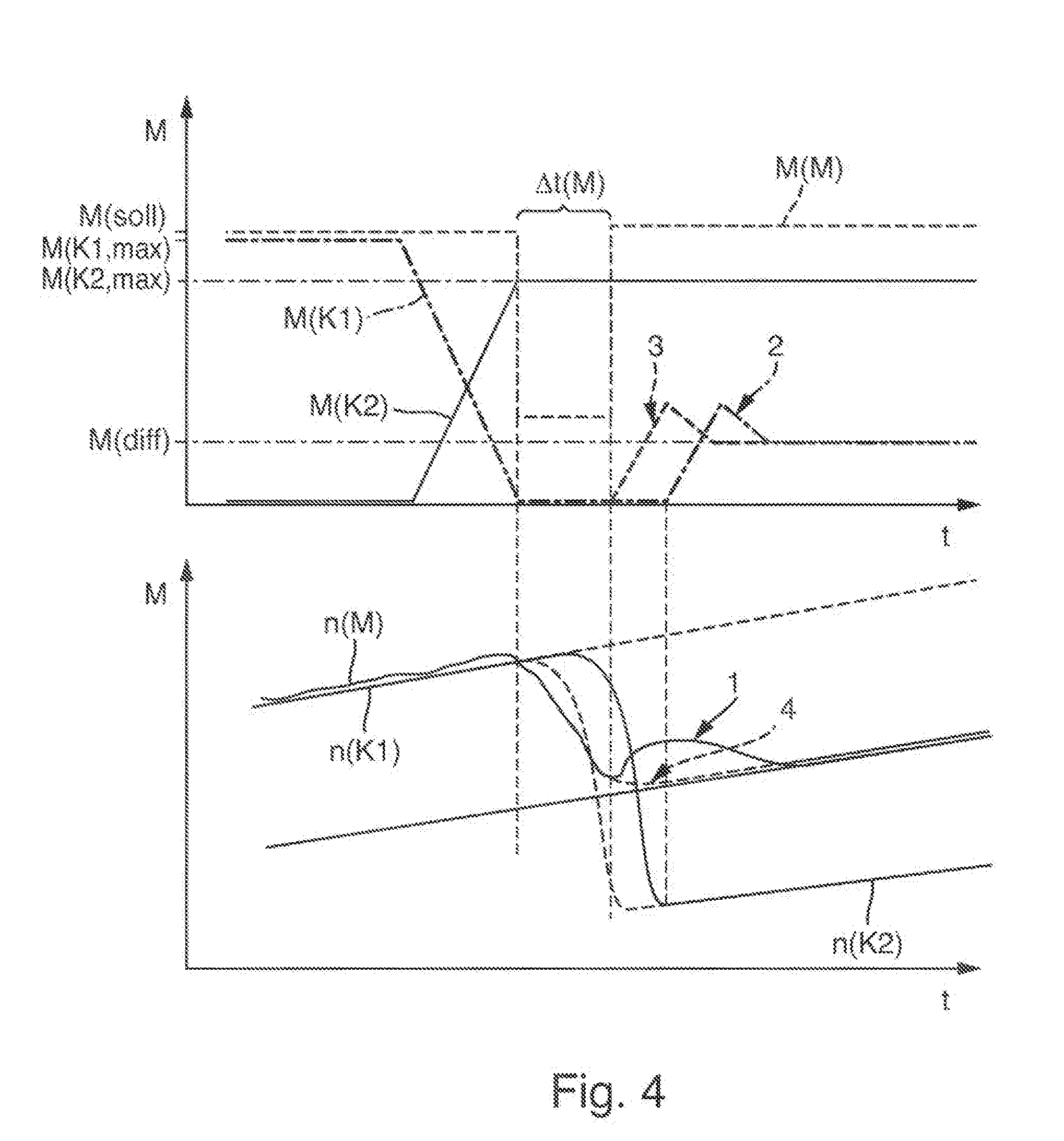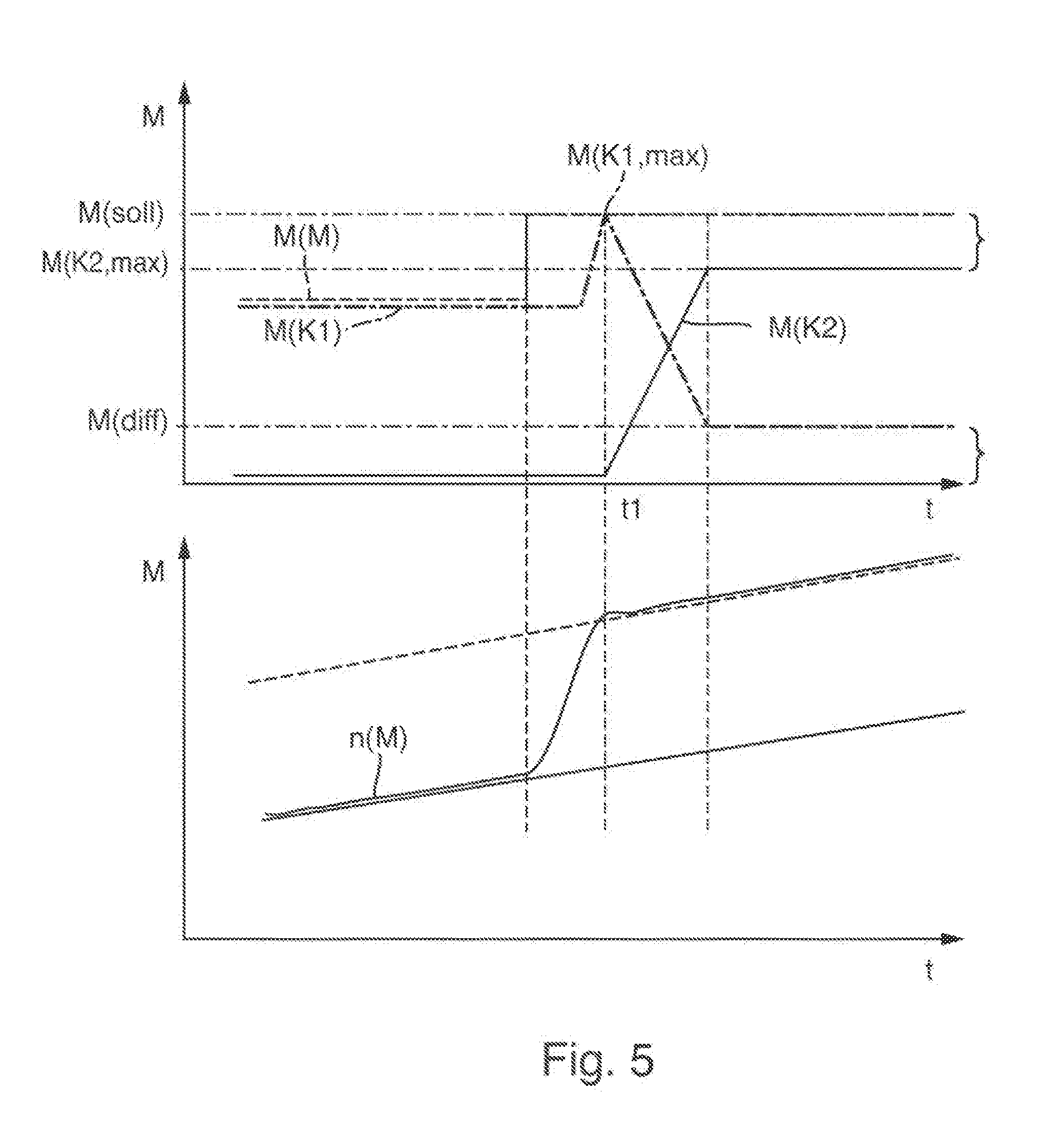Method for controlling a drivetrain having a dual-clutch transmission
a technology of transmission and drivetrain, which is applied in the direction of mechanical equipment, digital data processing details, instruments, etc., can solve the problems of unnecessary power loss in the drivetrain, reduced torque transferable by means of friction clutch, so as to limit the torque of the internal combustion engine, reduce the maximum clutch torque, and limit the effect of the target engine torqu
- Summary
- Abstract
- Description
- Claims
- Application Information
AI Technical Summary
Benefits of technology
Problems solved by technology
Method used
Image
Examples
Embodiment Construction
[0006]The object of the invention is to propose a method by which a drivetrain can be operated without excessive power losses when the transferring capacity of a friction clutch is reduced.
[0007]The proposed method serves, for example, as a routine for control software of a drivetrain in one or more control devices of the control system of a drivetrain. The drivetrain includes, in a non-complete enumeration, an internal combustion engine which is controlled depending on a load demand on target engine torque requested for example by a control of the drivetrain or by the driver, for example by means of an accelerator pedal, and a dual-clutch transmission with two sub-transmissions, each having a friction clutch positioned operatively between the internal combustion engine and a sub-transmission.
[0008]Dependent on a control of the dual-clutch transmission, the friction clutches transfer a specified clutch torque, and are actuated accordingly by clutch actuators, preferably lever actuat...
PUM
 Login to View More
Login to View More Abstract
Description
Claims
Application Information
 Login to View More
Login to View More - R&D
- Intellectual Property
- Life Sciences
- Materials
- Tech Scout
- Unparalleled Data Quality
- Higher Quality Content
- 60% Fewer Hallucinations
Browse by: Latest US Patents, China's latest patents, Technical Efficacy Thesaurus, Application Domain, Technology Topic, Popular Technical Reports.
© 2025 PatSnap. All rights reserved.Legal|Privacy policy|Modern Slavery Act Transparency Statement|Sitemap|About US| Contact US: help@patsnap.com



